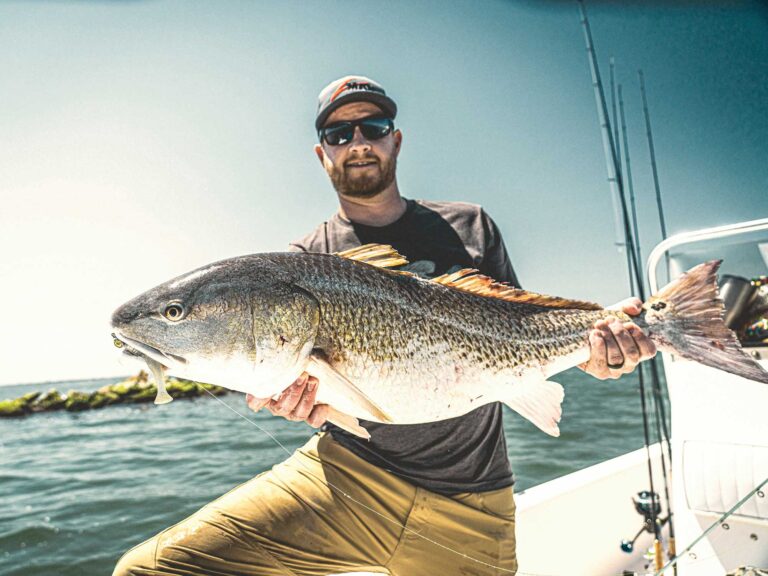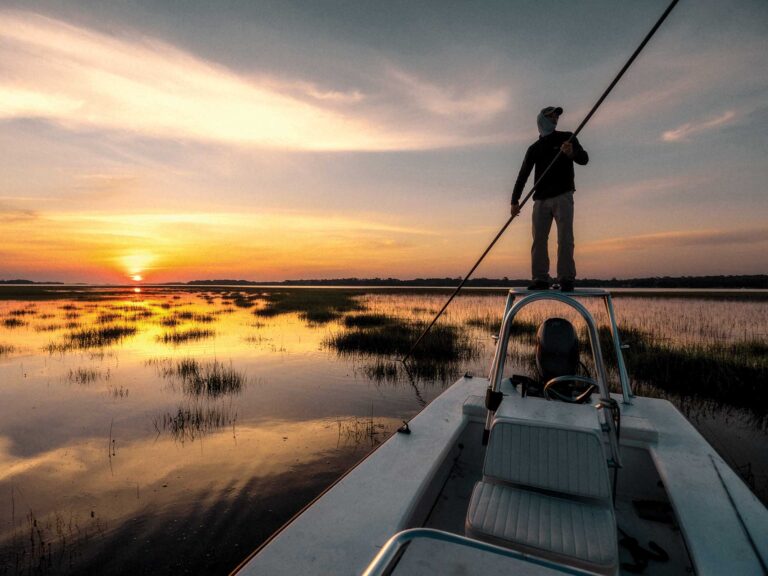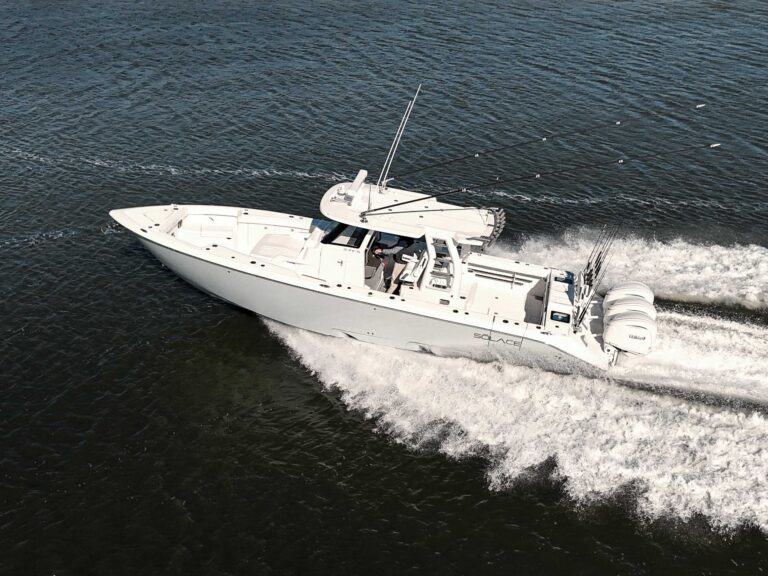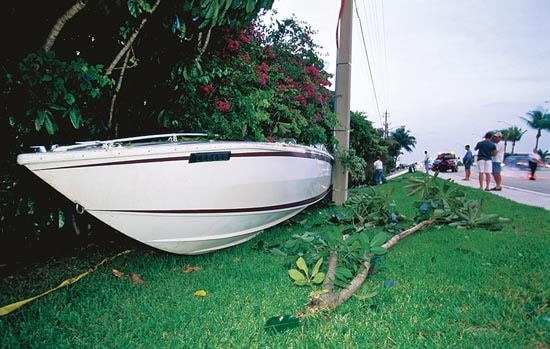
BREAKDOWN: A trailer mishap can ruin much more than a day of fishing.
Photo: Walt Jennings
My buddy and I called it a night and left the trout biting under the bridge lights to head for home. At the ramp, we loaded the boat on the trailer. But when I tried to haul out, something was amiss: The trailer wouldn’t roll. We quickly discovered the problem-the left hub bearings were gone. And I mean completely gone: The trailer tire and wheel were floating next to the boat.
We relaunched the center console and dumped the crippled trailer in the parking lot. I put the boat in a nearby transient slip, and came back the next day to replace the hub. All I lost was some sleep, but the outcome could have been ugly had we been on the road when that bearing let go.
The corrosive marine environment metes out punishment to everything exposed to it. If you pull your boat on a trailer, you will have problems, even with routine maintenance. Today, trailer-equipment failures are magnified as more of us pull bigger boats, and haul them farther to fish new spots.
But minor annoyances don’t have to escalate into dangerous situations. The correct combination of vehicle and trailer, along with an aggressive maintenance schedule, are the keys to safe, problem-free trailering.
1. A Good Match
“Make sure your trailer and tow vehicle are matched,” says Alon Dotan of Dotan Transports (www.interstatehaulers.com), who hauls up to 700 boats annually. “Otherwise, you’re asking for trouble. Your vehicle should have the transmission, suspension and gear ratio to handle your load. And don’t push the limits of your towing capacity.” Tow-vehicle ratings are listed on the VIN sticker found on the driver’s side doorjamb.
2. Watch Your Weight
Dotan recommends keeping the combined weight of the boat and trailer at 500 to 1,000 pounds below the rated overall weight capacity of the trailer. This leaves a safety allowance for the weight of gear, ice, bait and fuel that you’ll haul. Trailers have VIN stickers that contain the weight-rating information. But if it’s worn off, look for a stamp containing model information on the I-beam near the tongue. My Rolls trailer is a W-2160T model: 21 designates the length of boat, 60 indicates 6,000 pounds gross weight and T indicates it’s a twin-axle model. Check with the manufacturer to be sure what your number means.
Tongue weight is important, too. For the trailer to track straight without bouncing or fishtailing, tongue weight should be between five and ten percent of the gross trailer weight. So for a Class II hitch rated at 3,500 pounds gross trailer weight, Dotan says no more than 350 pounds should be on the trailer tongue.
3. The Once Over-often
Inspect your trailer for rusty U-bolts and other signs of structural problems, and do it often. Make sure your bearings are packed with grease and check brake-fluid levels, lug nuts and tie-down straps. Finally, see that brake and running lights all work.
Carry spare bulbs and tires, along with the necessary tools for roadside repairs. Replace the spares you use and the tools you borrow from the kit.
4. Rubber Meets the Road
Trailer tires should match the weight-load rating and be properly inflated to prevent overheating and improve fuel economy. Tire pressure changes with rising or falling temperatures, so stop every 200 miles to recheck the air.
5. Get Hitched
When you hook the trailer coupler to the hitch ball-always on a level surface-make sure the coupler locks down over the ball and secure it with a lock or pin. Raise the jack stand fully and lower antennae. Secure loose items, latch hatches and position the engines as you want them. Attach the trailer safety chains to the tow vehicle crossed in an X pattern under the tongue, to keep it suspended should the coupler break free.
6. The Long Haul
Thinking about fishing a tournament several states away? Make sure you’re legal before you go. Each state has its own set of trailer laws for load restrictions, brake requirements and more.
And on the road, don’t drive when you’re tired, don’t speed and leave room to brake and maneuver. I bought some extra insurance for my trailer: a hub assembly that stays in the truck. I haven’t used it yet, but it’s nice to know it’s there.
Stay on the Ball
Reduce the stress of towing.
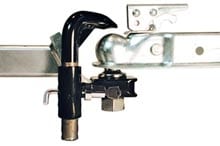
For additional towing security, try the DuraSafe Locks Trailer Guardian (starting at $42). Bolt on the bracket with the trailer ball, then slide the locking arm down onto the coupler. The rig will stay together, despite bumpy roads or thieves. One- or two-arm versions work with 2 1/2- and three-inch ball mounts. DuraSafe Locks; (866) 544-5615; www.durasafelocks.com
– D.L.





